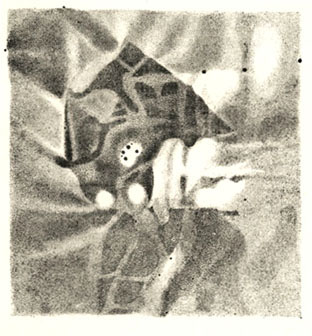
 My project focuses on various drawings of nebulae made by English astronomers and artists between 1830 and 1865. These drawings were not only an important part of the nascent stellar astronomy of the period in the United Kingdom, but became vital to an intense debate that centered around the Nebular Hypothesis. This debate engaged various layers of Victorian literati, including the likes of John Herschel, Lord Rosse, Thomas Robinson, John Pringle Nichol, George Airy, William Whewell, John Stuart Mill, and other giants of the period. The issue, which the Nebular Hypothesis starkly brought into relief, was that of resolvability and change: if the phenomena (the nebula) could be resolved into a mere collection of stars, then this apparently pointed to the falsity of the Hypothesis. But if the entity was irresolvable, and no change could be traced, then this pointed to the nebulous nature of this phenomena, and thereby, for some, supported the Hypothesis. At least during the relevant period, the decision between these two alternatives rested mainly on the various drawings made of the phenomena observed, using some of the largest telescopes, freshly constructed, in the world. What kind of phenomena do the drawings reveal (classification)? What kinds of inferences were warranted from the drawings? Were the drawings informed by the various cultures of inference and interpretation? Were there particular conventions in drawing techniques used to preserve information, and differentiate between conceptual and non-conceptual content?
My project focuses on various drawings of nebulae made by English astronomers and artists between 1830 and 1865. These drawings were not only an important part of the nascent stellar astronomy of the period in the United Kingdom, but became vital to an intense debate that centered around the Nebular Hypothesis. This debate engaged various layers of Victorian literati, including the likes of John Herschel, Lord Rosse, Thomas Robinson, John Pringle Nichol, George Airy, William Whewell, John Stuart Mill, and other giants of the period. The issue, which the Nebular Hypothesis starkly brought into relief, was that of resolvability and change: if the phenomena (the nebula) could be resolved into a mere collection of stars, then this apparently pointed to the falsity of the Hypothesis. But if the entity was irresolvable, and no change could be traced, then this pointed to the nebulous nature of this phenomena, and thereby, for some, supported the Hypothesis. At least during the relevant period, the decision between these two alternatives rested mainly on the various drawings made of the phenomena observed, using some of the largest telescopes, freshly constructed, in the world. What kind of phenomena do the drawings reveal (classification)? What kinds of inferences were warranted from the drawings? Were the drawings informed by the various cultures of inference and interpretation? Were there particular conventions in drawing techniques used to preserve information, and differentiate between conceptual and non-conceptual content?
During this period, drawings of nebulae were used, to be specific, for a variety of purposes: to track changes in the nebulae, to depict resolvability or lack thereof, to help one calibrate telescopes, to compare observations made using one telescope with observations made using another telescope, to study the »form« of this phenomena, to aid in the classification, identification, and cataloging of stellar phenomena, and used in the confirmation and development of hypothesis in astronomy. Put into the context of the Nebular Hypothesis debate, and the new science of stellar astronomy, a significant epistemic space is opened up by the drawings made of the nebulae. While observing through a telescope, these drawings began as mere sketches in the Night Books of an astronomer. In most cases, however, artists were hired, individuals who were skilled in the use of the stylus, to sketch and engrave the objects seen by the astronomer. Specific techniques became associated with these drawings, techniques which were as constrained by science as the artistic sensibilities involved. What epistemic role did these techniques play in the drawings and in their use by the astronomers as representations, intermediaries, records, and points of reflection, proof and conjecture?
I intend to study the links between the techniques used in the drawings of the nebulae and the stabilization of these »working objects« and the production of »pure phenomena« for stellar astronomy. This is particularly instructive in the case of nebulae, which, at the time, were infamously thought of as »wild« and »ambiguous« objects. Finally, astrophotography was not used until the 1880’s to capture a nebula, but photography was already being used in the natural sciences since the late 1840’s. Compared to the drawings of William Herschel, which were drawn and published at a time when photography did not exist, did the drawings that were made simultaneous to the use of photography have imposed on them new epistemic demands and constraints?
[PHOTOGRAPHY/COPYRIGHT CREDITS]
The Parsonstown picture of a region of the Orion nebula. Philosophical Transactions, The Royal Society of London, 1868